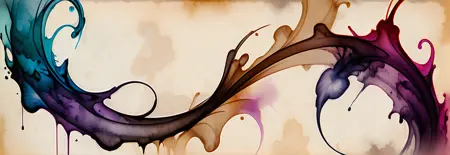Verified: a year ago
SafeTensor
The FLUX.1 [dev] Model is licensed by Black Forest Labs. Inc. under the FLUX.1 [dev] Non-Commercial License. Copyright Black Forest Labs. Inc.
IN NO EVENT SHALL BLACK FOREST LABS, INC. BE LIABLE FOR ANY CLAIM, DAMAGES OR OTHER LIABILITY, WHETHER IN AN ACTION OF CONTRACT, TORT OR OTHERWISE, ARISING FROM, OUT OF OR IN CONNECTION WITH USE OF THIS MODEL.
The main goal was to make more 'live' images with livelier emotions and more dynamic poses and slightly amateurish quality (also can produce high quality images).
P.S: Thanks to everyone for the feedback! I've noticed the comments (not only here) about anatomy issues, and I’ve been collecting reports and examples from all of you. I'm considering a couple of options to address this:
Training a full checkpoint, which might be the more rational approach for consistent improvements.
Expanding the dataset with more photos that cover diverse poses to help refine anatomical accuracy.
I appreciate the input - it really helps me shape the future updates
P.S.2: I’ve moved training to RunPod for consistent, high-quality results. If you'd like to support my work and future updates, you can find me on Ko-fi. Cause i plan to fine-tune a model, not just a LoRa. https://ko-fi.com/danrisi
Setting i use in ComfyUI for Flux:
CFG=1, Guidance =2.5, Scheduler=Beta, Sampler=dpmpp_2m, Steps=40, Strength= from 0.8 to 1.0 works good, but i'm usually use with 1, but if hands getting worse then i set 0.87
Setting i use in ComfyUI for SD3.5:
CFG=1, Guidance =3.5, Scheduler=sgm_uniform, Sampler=dpmpp_2m, Steps=40, Strength= from 0.5 to 1.0 works good, but i'm usually use with 0.7
V2 - Flux
Brings even more realism and versatility to your creations, with significant improvements in stability, anatomy, and overall quality. This update makes the LoRA more adaptive, allowing you to achieve various quality levels based on your prompts—from high-definition realism to intentionally lower-quality aesthetics.
Trained on 1048 images.
What's New:
Stability Improvements: The new version is more stable and works better with text-based prompts, providing a smoother and more predictable output.
Enhanced Hands & Anatomy: Hands and body anatomy are more refined, enhancing lifelike quality.
Quality Flexibility: With the right prompts, you can adjust for both high-quality and lower-quality aesthetics (examples available).
V1.2 for SD3.5 - Large
Decided to make a version for sd3.5 almost with same settings. Imo looks good, but i noticed some problems with anatomy (in some moments even worse then flux), but aesthetic (colors, contrast and other stuff looks even better then flux). I see that sd3.5 have potential, maybe new versions will be on sd3.5 too.
V1.2
Changed half of images in dataset, changed prompting style, improved hands, less 'flashlight effects' at night scenes and overall LoRa quality improvement (i hope).
In this version it's unnecessarily to use tons of 'trigger words' like in V1. Just add some of them that i mentioned in trigger words
V1
Trained another amateur lora (that's already been done a lot around here).
Still, I took some pictures from my dataset on the 2000s and added another 700 pictures. It came out pretty good so far, but there is a controversial point about quality optimization, I was hoping it would help control the quality, but as I see it only confused the model. In the dataset there are many different gradations of quality, like:
1) High-resolution photo, shot on a mobile phone, no visible artifacts, clear and sharp
2) Low-resolution, amateur photo shot on digital camera, no visible jpeg artifacts, slightly noisy
3) Medium-resolution photo, shot on a mobile phone, slight graininess due to low light conditions, no significant digital artifacts
And other their combinations and variations. I think i'll remove such in next version. But this one working the best for me:
Low-resolution, amateur photo shot on digital camera, no visible jpeg artifacts, slightly noisy






.jpeg)